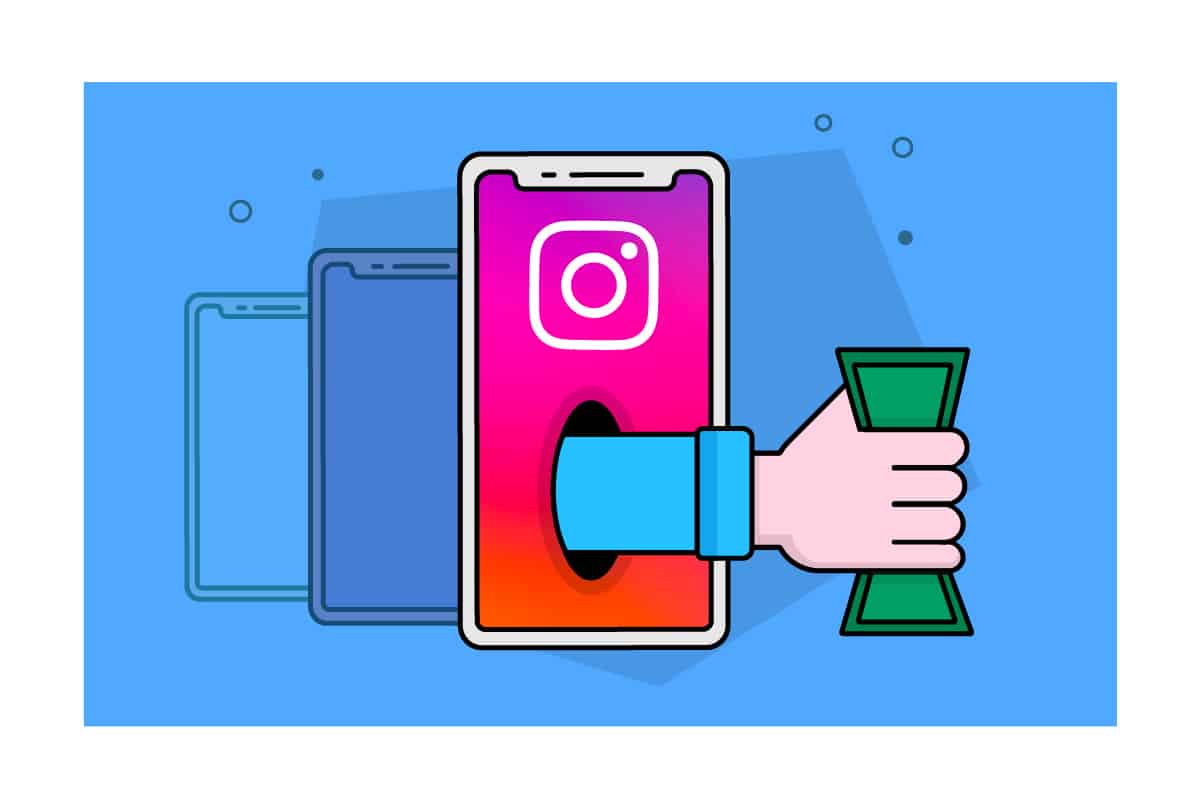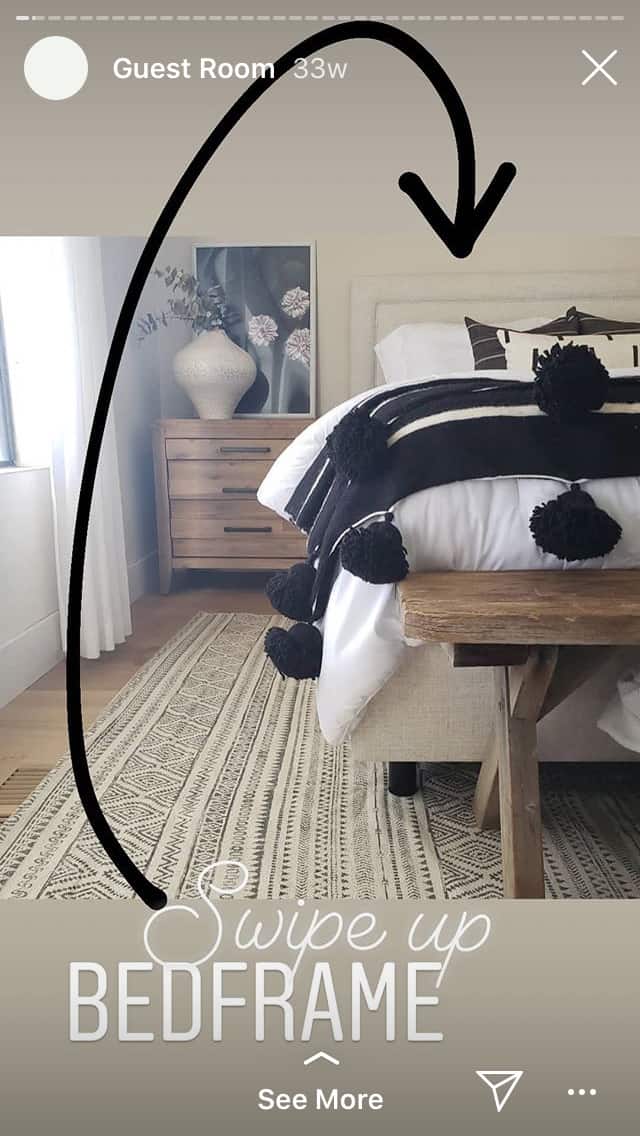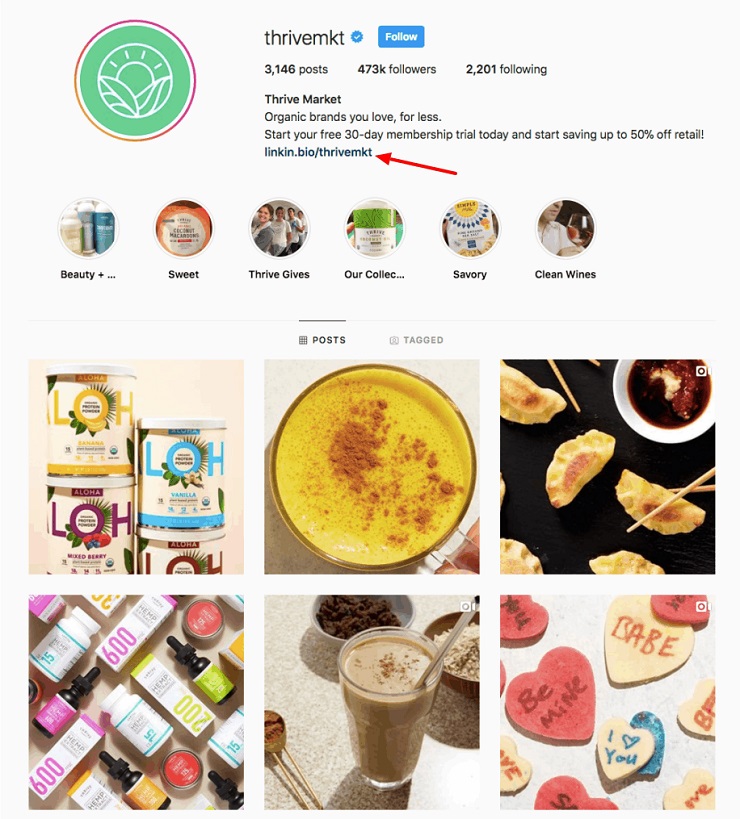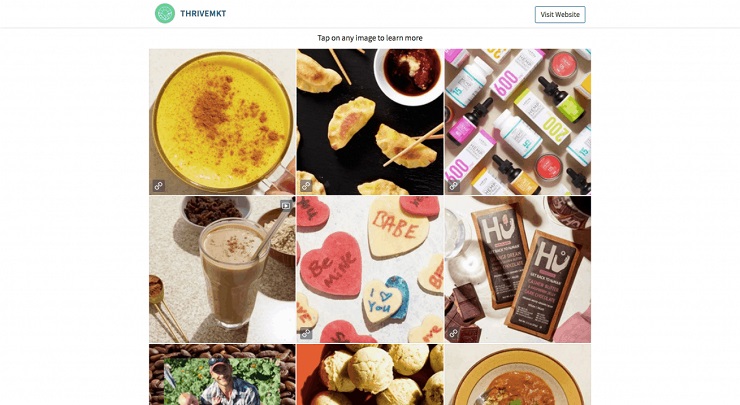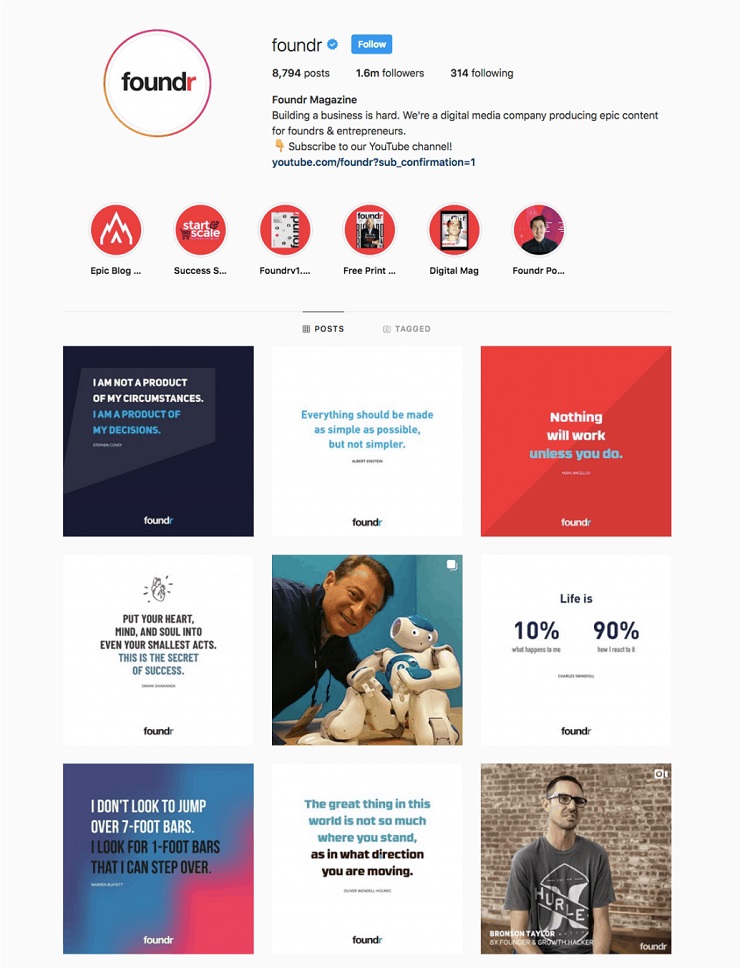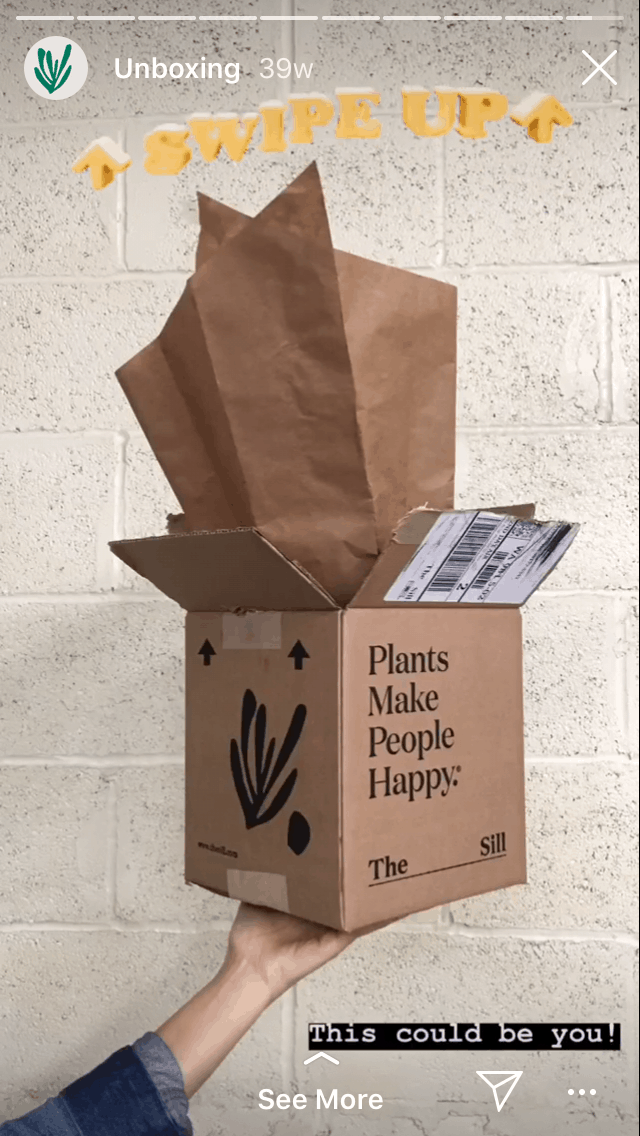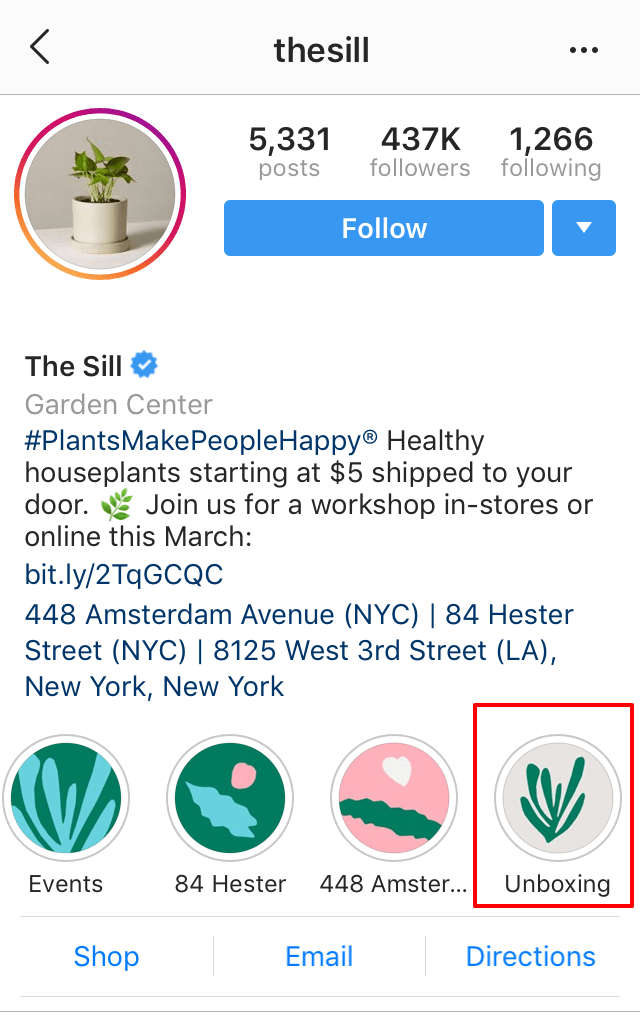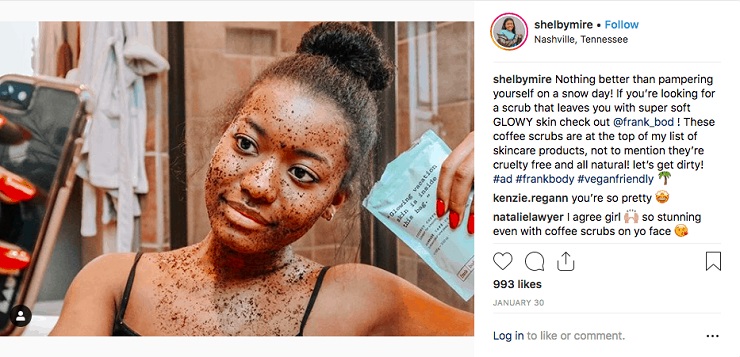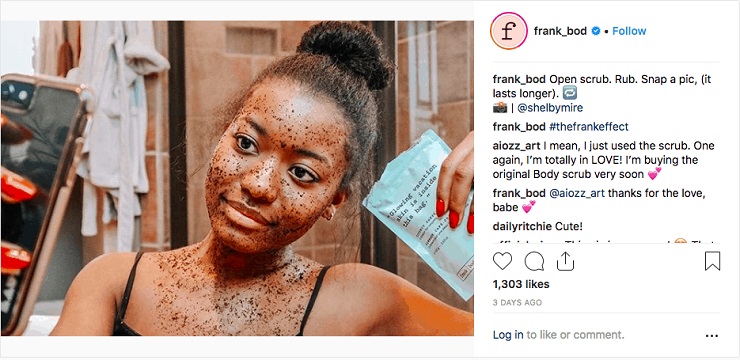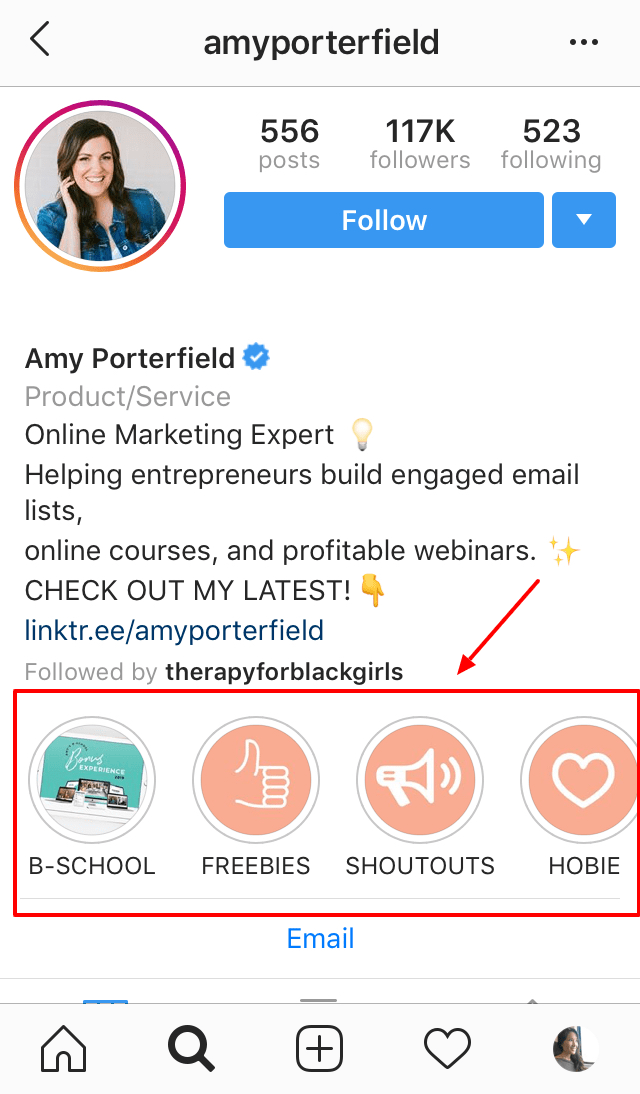By now, it’s probably no surprise to you that people make money on Instagram.
But maybe you think that’s a lofty goal reserved only for those with 100,000 followers or more. That is not true at all! Sure, being an Instagram influencer is one way to monetize the platform, it is far from the only way.
Here at Foundr, you know we’re big fans of Instagram. Early on in the business, we managed to grow our following to 500,000 in 12 months, and it continues to be an important platform for us, where we post motivational and informational content to inspire fellow founders, as well as promote our resources.
But in this post, we’ll dive into how to make money on Instagram in 2025, even if you’re not famous.
Without further ado, let’s get started:
How to Monetize Your Instagram Account: Potential Income Streams
There are five main ways to monetize your Instagram account:
- Sponsored posts
- Affiliate marketing
- Promoting your own products or services
- Offer Instagram Management Services
- Utilize Instagram Badges & Live Monetization
Let’s break down each monetization method below.
Sponsored Posts
For many, sponsored posts are the ultimate achievement in Instagram monetization. This is where a brand pays for promotion on an influencer’s Instagram account.
It’s not all glitz and glamour, though. Being an Instagram influencer requires a lot of work. You’ll have to create engaging, beautiful photos and videos around a brand’s product—and it has to look professional. You’ll also have to follow any guidelines the brand gives you. And to top it all off, the brand will want to see numbers as proof they’re getting a return on their investment.
Now, before you write this one off because you don’t have a million followers, take heart! Micro-influencers are the next big thing in influencer marketing; these are accounts with 1,000 to 10,000 Instagram followers—an achievable goal for you!
Far more than follower count, what brands really care about is engagement rate. This is the number of likes and comments you get in proportion to your posts and follower count. An Instagram influencer with 500,000 followers who only gets an average of 100 likes on their posts isn’t as valuable as one with 5,000 followers who gets 100 likes per post, because the connection with their audience is far more authentic.
Example of a Well-Crafted Sponsored Post on Instagram
Ellie Hughes (@selflessly_styled) did a fantastic job on a sponsored campaign for Encircled, an ethical clothing line. Check out the beautifully produced video she created for the campaign. Notice how she crafted an entire story around the all-day jumpsuit, showing her wearing it from 7 a.m. to 7 p.m. She also posted photos to her Instagram before and after the video launch to ensure maximum reach.
Hughes “only” has 10,000 followers, but you can see why brands like Encircled would want to work with her. Her following is highly engaged, plus her ethical fashion blog aligns perfectly with Encircled’s ethical mission. This is what you want to aim for as an influencer!
How to Secure Sponsorships:
Step 1: Gather your stats and create a media kit.
The world of Instagram sponsorships is becoming extremely saturated, so it’s harder than ever to prove to a brand that your audience is really engaged with your content and that your sponsored posts will have high ROI.
In your media kit, be sure to include stats that support your case that you’d be a great influencer for the brand. Include your follower count, engagement rates, plus any historical data you have if you’ve done brand sponsored posts in the past. For example, if a previous brand campaign resulted in 20% more traffic for the brand, include that information.
If you don’t have the time or skills to design one yourself, Canva offers media kit templates.
Step 2: Scope out brands that align with yours.
Next, make a list of brands you would love to promote on your Instagram account. Choose ones that make sense and align with your own brand. An easy place to start is with the products you already use and love. You can promote these products with authenticity because you’ve used the product yourself and can recommend it.
Once you know who you’d like to work with, it’s time to pitch them. Check out this post on how to pitch brands for sponsorships (written by a PR professional!).
Another way to dip your toes into the influencer marketing space is to use influencer marketing platforms. Instead of doing your own research and outreach, you can sign up on an influencer marketing platform that matches you to brands with active campaigns. Here are a few popular platforms:
Step 3: Create awesome content.
So you snagged a sponsor—congrats! Now the real work begins. A brand will likely give you some guidelines on what they’re looking to promote, the kind of content they’d like to see, and the deadlines. From there, it’s up to you as the creative to craft content that’s both pleasing to the brand and engaging for your audience.
It’s also helpful if the brand can give you a unique discount code or tracking URL so they can track how many visits to their site and how many purchases of their product were driven by your Instagram account. Push for this, because you’ll want a way to show them how successful your campaign was for them.
Step 4: Show the brand your results.
Once you’ve posted the content for the brand, be sure to check in with them to show them your results. How many views did the post get? How many likes? Were the comments thoughtful and positive?
Remember, brands are sensitive about seeing an ROI from their influencer marketing efforts. If you can show them that working with you is helpful to their bottom line, they’re way more likely to work with you again!
Step 5: Rinse and repeat.
At this point, your job as the influencer is to get them to work with you again based on the (hopefully) positive results from the first campaign. Show initiative, and start pitching them new campaign ideas.
For sponsored posts, it’s best to work out a package deal with the brand. Gearing up for a sponsorship takes up a lot of time and energy, so it doesn’t make sense to only do a one-off post for a brand, only to have to find another brand to work with next (plus, a brand is unlikely to see ROI from a single-post campaign). Long-term relationships are key.
Affiliate Marketing
Affiliate marketing is when you promote someone else’s product and then receive a commission when a qualifying sale is made through your affiliate link.
Examples of Affiliate Marketing on Instagram
Erin Conway (@kismet_house) does a great job of using her interior design niche for affiliate marketing. She often posts photos of her home in her Instagram stories, and then includes an affiliate link to each item in the room in case her followers are interested in purchasing it.
How to Do Affiliate Marketing on Instagram
With Instagram, you can promote affiliate products through your individual posts or your Instagram Stories. The tricky thing with Instagram is it isn’t always easy to get people to click links (especially since links are not clickable within the post captions).
On top of that, you need to reach 10,000 followers or become verified to be able to get the coveted “swipe up” feature in your Instagram Stories, making it easy for followers to “click” your affiliate link with a simple upward swipe of the thumb.
Because of these challenges, you might want to consider using a tool such as Linkin.bio to make it easier for followers to get to your links. With Linkin.bio, you can use one link to house clickable versions of every one of your Instagram posts.
Here’s Linkin.bio in action on Thrive Market’s Instagram account. Notice how they use it to enable followers to shop their feed:
When you click the Linkin.bio link, you’re taken to their Instagram grid where each post is clickable. And if you click the first square, you’ll be taken to their golden milk latte recipe where you can buy the ingredients.
How to Find Affiliates
So how do you become an affiliate for a product?
Step 1: Find the right affiliate products to promote.
Find products that you personally use and love and that align with your followers’ interests.
If you’re a food blogger, for example, and you happen to love a particular pair of shoes—no matter how much you love those shoes, it doesn’t make sense to promote it to your followers if the reason they follow you is to learn about new recipes and cooking tips. At best, you’ll confuse them. At worst, you’ll annoy them.
Instead, the next time you post a photo of your latest dish, you can mention what kind of cookware you use and include an affiliate link in your bio.
Also think about what questions your followers ask you. Do they ask you for recommendations on a particular type of product? That may clue you in to some potential affiliate products to promote.
Step 2: Join affiliate programs.
To find an affiliate program for a specific product, it’s usually as easy as Googling “ affiliate program.”
You can also sign up for affiliate networks, websites that aggregate tons of different affiliate programs in one place for you to search. Some popular affiliate networks include:
Step 3: Get your affiliate links.
Once you’re approved for your chosen affiliate programs, log into your dashboard and find your affiliate link. This is a link with a unique identifier that ensures proper tracking if someone clicks your link and then buys.
Step 4: Promote your links (with disclosures!)
Now that you’ve got your affiliate links, it’s time to promote them! It’s not as simple as slapping an affiliate link in your bio, though. You need to create a story around that affiliate product. Post a photo of you using the product, and write a caption telling your followers why you started using it and what results it got you.
It’s also important to always disclose affiliate links. Not only is it the ethical thing to do (your followers will want to know if you’ll be compensated for something), but it’s also required by the FTC. Here’s some more information on what a proper affiliate disclosure entails.
Promoting Your Own Products
This is how Foundr uses our Instagram account, and for many businesses, this makes the most sense. Instead of diluting your brand by promoting other brands and products, why not promote your own?
If you take a look at the screenshot below, you’ll see that we try to stick to the 80/20 rule, where only 20% of our content is promotional. The other 80% is motivational quotes to inspire our followers to do their best work.
Of course, there are many other ways to promote your products on your Instagram account. If your business meets certain requirements (such as having an Instagram Business profile, having a connected Facebook page, and selling primarily physical products), you can even make your posts shoppable. To see this in action, check out how Away showcases its travel luggage in Instagram posts and makes them shoppable with tags. If you tap the image, the price tags will pop up. Tap the tag to get more details on the product and even visit the sales page.
And you don’t have to limit yourself to your static posts in your feed. Take advantage of Instagram Stories and Highlights to add more excitement to your content. The Sill does this by creating an Instagram Story showing the various steps of unboxing of one of their plants. At the end, they display a strong call to action: “Swipe up. This could be you!” Swiping up leads you to their online plant store.
They’ve also pinned this Story to their Highlights under “Unboxing” so anyone browsing their profile can easily access it.
Showing a behind-the-scenes glimpse or an unboxing of your product makes great content for Instagram Stories. It’s a unique way to draw your followers in to the customer experience.
And lastly, on the flip side of what we talked about earlier, you can work with Instagram influencers to have them promote your product. Here’s a great example of that: Frank Body collaborates with influencers to market their coffee scrubs—and check out the cross-pollination happening! First, the influencer (@shelbymire) posts to her account:
Then, Frank Body reposts to their own account. This is a great way to use influencer marketing to expand your reach and get quality content that you can reuse.
Frank Body used Instagram to help them reach $20 million in sales in one year. The company did this with the help of influencers, plus some creativity. They created a branded hashtag (#thefrankeffect), and with every product shipped, they included invitations for customers to become product ambassadors, along with instructions to post with the branded hashtag.
Offer Instagram Management Services
Maybe you’re great at growing an Instagram following but don’t have your own product or service to sell. Good news! Many businesses struggle with maintaining a strong presence on Instagram and are willing to pay for help. If you have skills in content creation, hashtag research, engagement strategies, and growth tactics, you can offer Instagram management as a service.
Nathan has prepared a fantastic free training course on building your Instagram business, which you can check out here.
How to Get Started:
- Build Your Portfolio – If you don’t have client work yet, start by growing your own account or offering free services to friends or small business owners in exchange for testimonials.
- Create a Service Offer – Outline what you’ll provide, such as daily posts, engagement management, analytics tracking, or hashtag strategies.
- Market Yourself – Post content showcasing your knowledge, reach out to potential clients and join freelance platforms like Fiverr, Upwork, or PeoplePerHour.
- Deliver Results – Show your clients how your strategies are improving their engagement, follower growth, or website traffic.
Many Instagram managers charge anywhere between $500 and $10,000 per month (or $35 to $350 per hour), depending on the level of service and client needs.
Utilize Instagram Badges & Live Monetization
Another underutilized way to make money on Instagram is through Instagram Badges, which allows your followers to tip you during Instagram Live sessions. If you’re already hosting live content, why not monetize it?
How to Get Started:
- Turn on Badges – Head to your Instagram settings and enable badges for your live streams.
- Promote Your Live Sessions – Let your followers know when you’ll be going live and what they can expect.
- Offer Exclusive Insights – Give followers value, whether it’s coaching, advice, entertainment, or industry secrets.
- Encourage Badge Purchases – Thank supporters during the live stream and highlight top contributors.
At the time of writing this article, creators receive 100% of their revenue from Badges purchased during an Instagram Live, minus applicable taxes and fees.
FAQs About Making Money on Instagram
How many followers do I need to start making money on Instagram?
It varies. If you’re monetizing Instagram by securing sponsorships, you’ll probably want a substantial following in the tens of thousands at least. If you’re monetizing Instagram by promoting affiliate products or your own products or services, then your following can be much smaller. Remember, engagement rate is what matters most.
Overall, 10,000 is a good milestone to aim for, because that’s the point at which you can use the “swipe up” feature in your stories, making it easier to post affiliate links people can easily visit.
How much money can I make on Instagram?
It depends. If you’re making money through sponsored posts, this will vary widely depending on how large your following is. For example, if you’re a micro-influencer with 10,000 followers, you might be able to charge up to $100 per post or at the least get free product from brands. But if you’re Kylie Jenner with over 100 million followers, you can get paid $1 million per post!
How do I decide what to charge for sponsored posts?
Sorry to sound like a broken record, but it depends. Instagram sponsored post rates vary widely. According to a 2016 Bloglovin’ survey, 97% of micro-influencers charge less than $500 per Instagram post. Later says many digital marketers go by a one-cent-per-follower rule (meaning you could charge $1,000 per post if you’ve got 100,000 followers).
Still confused? Pop your Instagram handle into this Instagram Influencer Earnings Calculator to help you come up with a fair rate to charge for sponsored posts, based on factors such as your follower count, recent posts, and engagement rate.
Dos and Don’ts of Making Money on Instagram
DO
Make use of ALL the Instagram features (Highlights and Stories, included).
Instagram has so many cool features besides regular posts! For example, you can add your best Instagram Story content to your Highlights. That way, your Stories will have longer shelf lives, since they’ll sit prominently at the top of your profile, rather than fading into oblivion when 24 hours is up.
Here’s how Amy Porterfield uses her Highlights:
And instead of posting photos all the time, try posting a video. Use all the features at your fingertips to maximize your chance of success on Instagram.
Work hard to build your following and engagement.
In the 2018 State of Influencer Marketing Study, marketers said that engagement rate on sponsored content is the number one metric they look at! Keep your engagement rate up by listening to your followers, responding to their comments, and producing content that aligns with their desires.
Build relationships with brands you’re interested in partnering with.
Brands are much more likely to work with you if you’re a true fan because they know you’ll be able to promote them authentically.
Use a social media scheduler to post new content regularly. Keep your feed fresh and updated by automating posts with an Instagram scheduler. Some options include:
DON’T
Purchase fake followers.
This is a BIG no-no in the social media world. While it may be tempting to fast track your growth by purchasing fake followers, in the end, it hurts everyone. You, as the owner of the Instagram account, will be hurt when your engagement scores plummet because your followers are just bots. And if a brand discovers that you’ve purchased fakes, they’re unlikely to want to work with you. (And yes, there are third-party tools that can help brands figure out that you’ve got fake followers.)
Ignore your followers’ comments. Yes, it’s overwhelming to reply to everyone, but try to reply as much as you can. Building a community with high engagement involves making sure your community feels heard.
Saturate your feed with too many sponsorships or affiliate products. The more products and brands you promote, the less effective each promotion is on its own. Your followers will suffer from a sort of “banner blindness,” where they realize everything you post is just a promotion, and they’ll tune your content out.
Think of your Instagram feed as prime real estate. Each time you put up a beautiful, well-built house with landscaped yards, the property value increases. But if you start cluttering your land with billboards, that property value will plummet. Be selective about what you promote—and how often.
Make It Rain on the ‘Gram
As you can see, making money on Instagram isn’t just possible—tons of people are doing it every day! Remember, it all boils down to three main Instagram income streams:
- Sponsored posts
- Affiliate marketing
- Promoting your own products or services
Getting brands to work with you becomes much easier once you’ve built a substantial following, so if you’re still in the early stages of growing your account, check out our Free Instagram masterclass and learn the exact strategies we used to get 500K+ Instagram followers in under 12 months.
